We had a special visitor in Washington Square Park today; an adult Red-tailed Hawk. What made this Hawk special was that it had a federal bird band on its right leg.
I managed to figure out the band numbers so I’ll contact Fish & Wildlife and hopefully find out more about this beautiful bird. Here is where you too can send in band sightings. This page shows examples of federal bands and color markers.
A fellow Hawk-watcher followed a visiting adult Hawk around the park yesterday too and from their description it sounds like they were observing the same bird so kudos to them for first spotting it. I think the Hawk is a male so I’ll refer to it as a he in this post.
I first spotted the Hawk resting in a western tree:
The Hawk flew to a tree hole squirrel nest. He mantled over the hole, claiming it:
He would dig into the hole, trying to grab a squirrel that was inside. He even stuck his head in the hole a few times:
This went on for 8 minutes. The Hawk was unsuccessful so he went to another tree to scan prey from.
Scrunch and spring:
He hopscotched around a few trees on the west side then flew over to the east side trees.
Resting leg kick:
He dove toward prey but missed his target and moved on:
He landed on another squirrel nest!
This Hawk was really focused on squirrels. It was a bit surprising because I have gotten so used to the resident Washington Square Park Hawks focus more on pigeons and rodents before going after squirrels.
A squirrel rushed down toward the Hawk, making the bird jump from the nest to the branch. The squirrel continued on its way down the tree:
The Hawk flew away and into the western trees again. He soon dove straight to a squirrel in a tree.
The squirrel escaped the Hawk’s charges:
I don’t know how serious the Hawk was to catch this squirrel though. At times it looked like the Hawk was being more bullying than threatening.
Diving past the squirrel:
The Hawk straightened out and flew to a new tree.
A dog that was being walked spotted the Hawk and froze, intently watching the bird fly by and then land. The dog then led its owner close to the tree, never letting its gaze waver from the Hawk. It was hilarious! The dog’s owner said the dog is obsessed with squirrels and probably thought the Hawk was a flying squirrel. I don’t doubt it!
The Hawk in yet a new tree:
The Hawk dove toward prey on a distant lawn but missed:
The Hawk walked close to the park path:
It was pretty chilly out and there weren’t many people in the park so the Hawk was in no danger by being so close to the path.
He flew into another tree, scanned the same lawn, then made another hunting attempt:
Rat trying to jump away:
The Hawk was too quick and powerful. He caught the rat after some thrashing against/through the fencing.
Resting with his catch:
Bringing the rat to a tree:
The Hawk spent a little over 10 minutes eating the rat:
Squirrels were walking around the tree hole the Hawk had been digging into earlier:
Swallowing the rat tail:
Wiping his beak clean on the tree:
Settling down to digest:
I had followed this Hawk around for two hours. There were times when I was tempted to leave because it would get pretty cold but it was obvious the Hawk was hungry and in the middle of hunting so what could I do? I had to stay and find out if he caught a meal!
I spotted Sadie on one of her favorite roof tops located a couple of blocks north of the park:
She flew off the building and flew toward the park but disappeared while en route (probably landing on a building just north of the park). I waited around a little while longer to see if she would enter the park and perhaps chase the visitor away from her territory but she stayed away so I left.

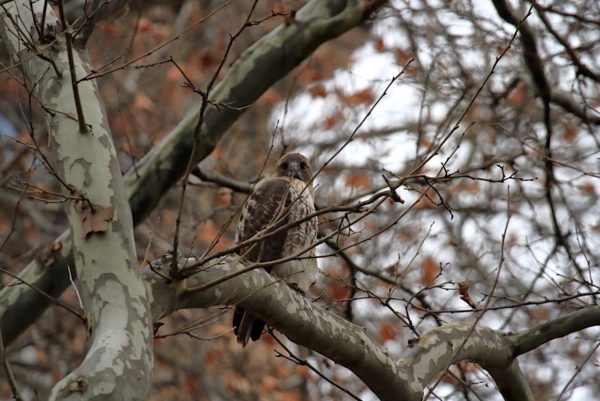
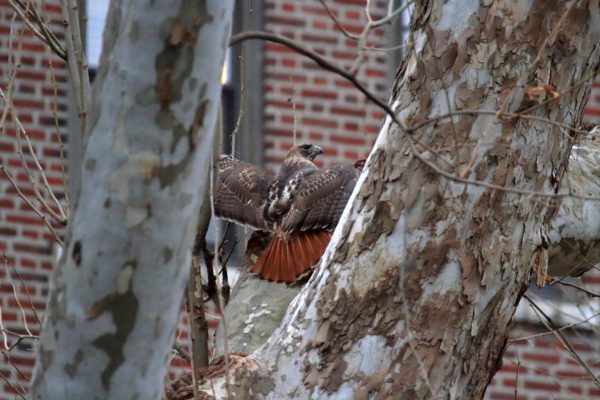
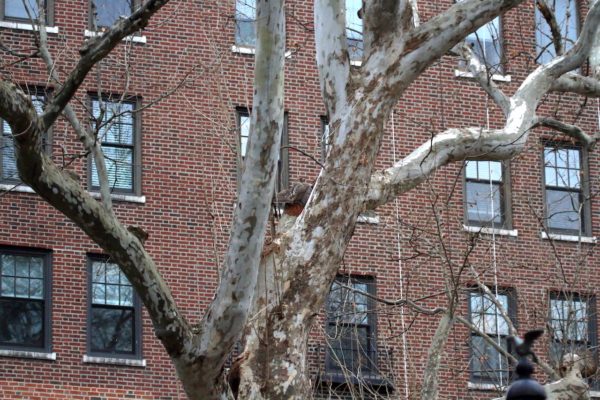
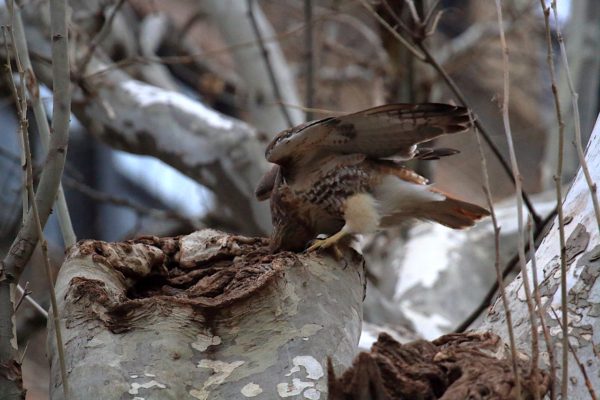
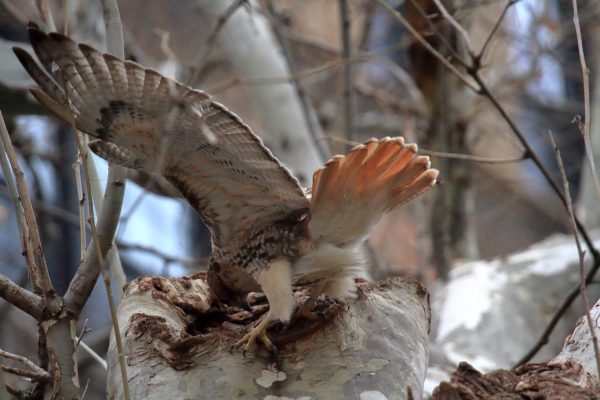
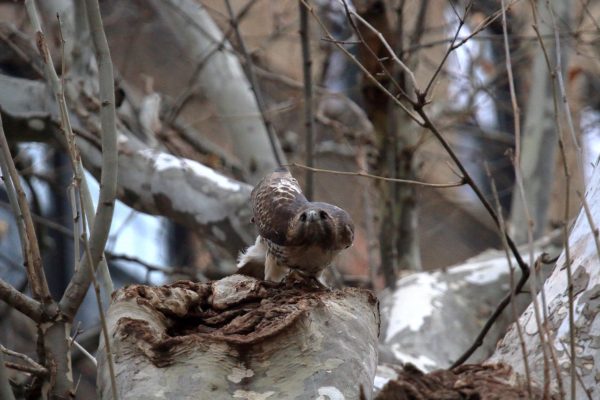
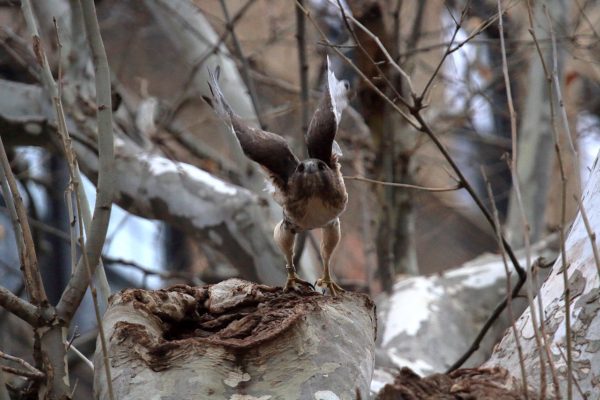
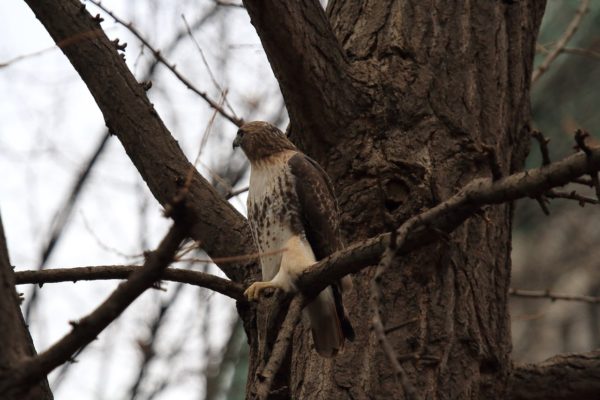
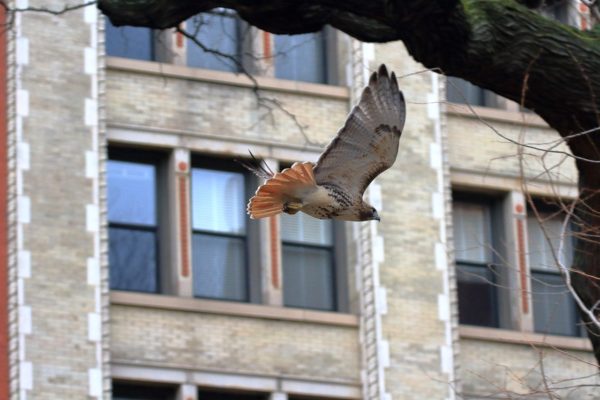
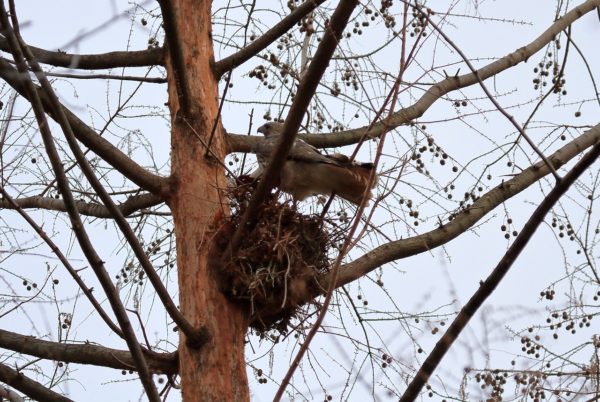
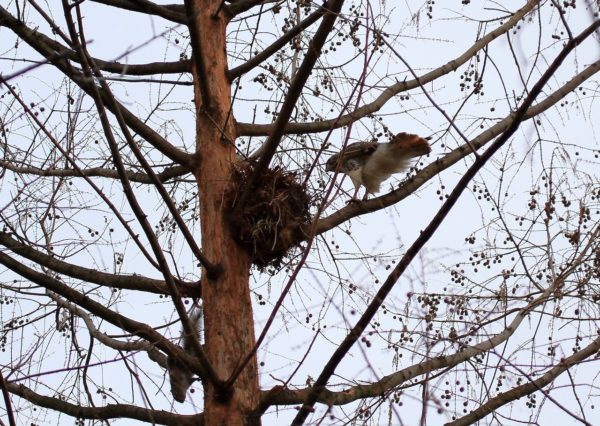
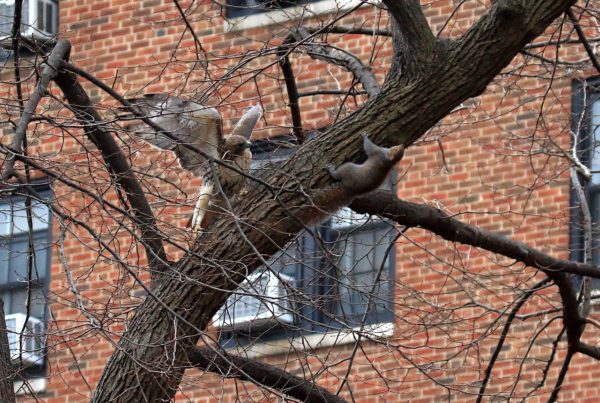
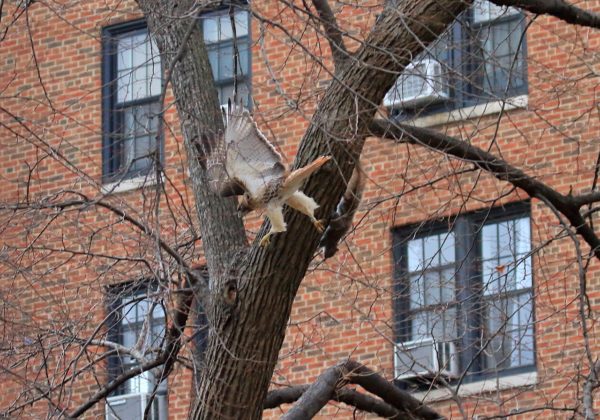
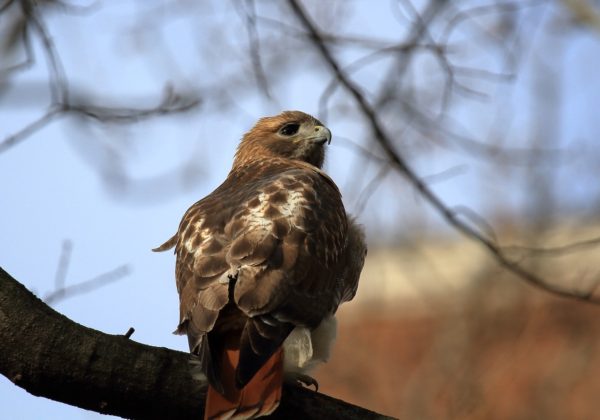
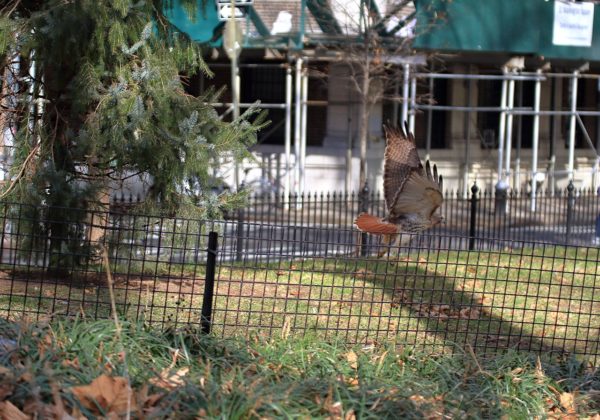

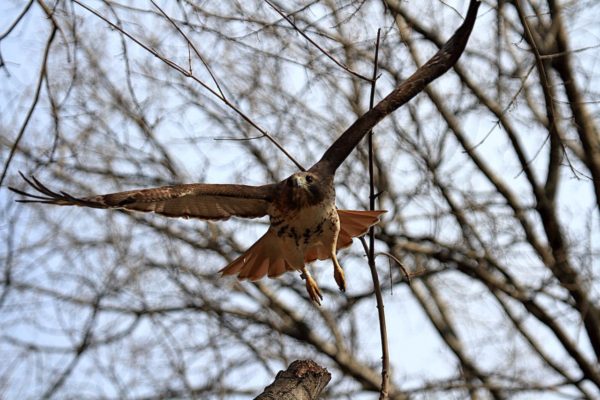
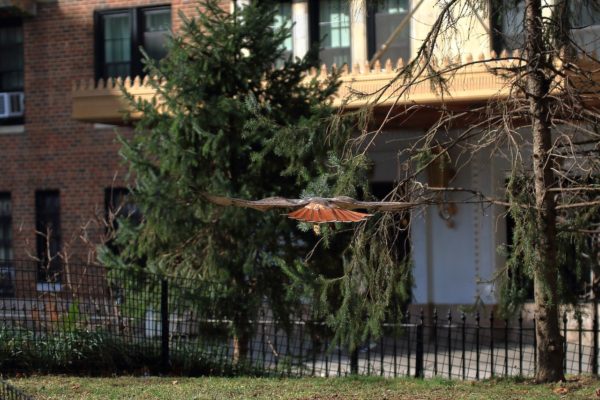
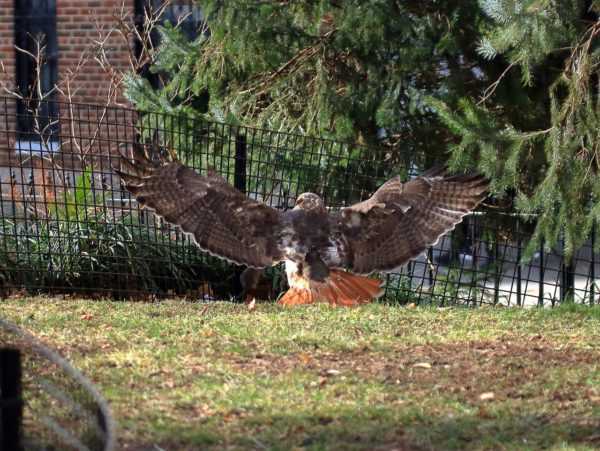
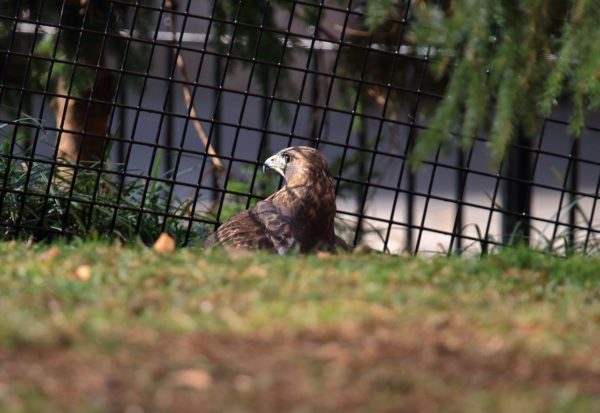
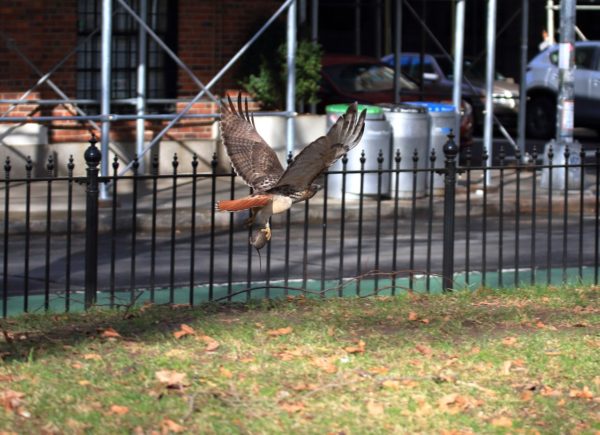
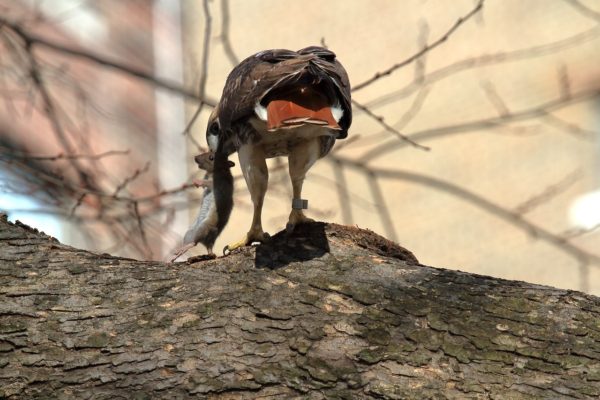
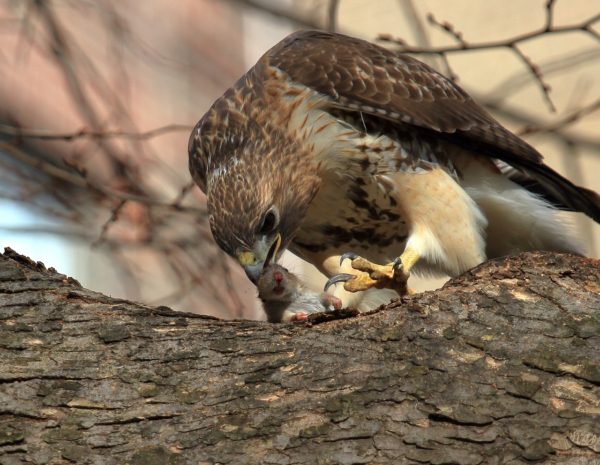
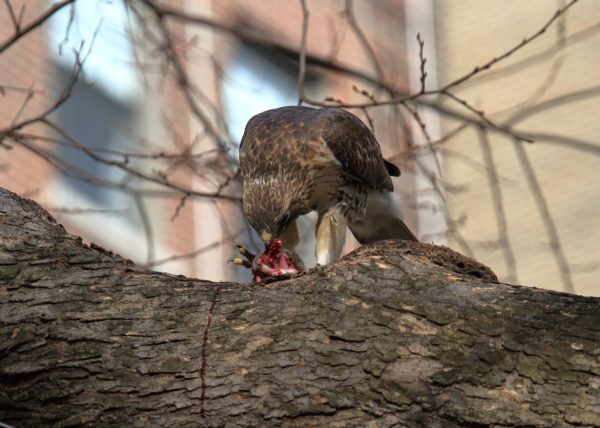
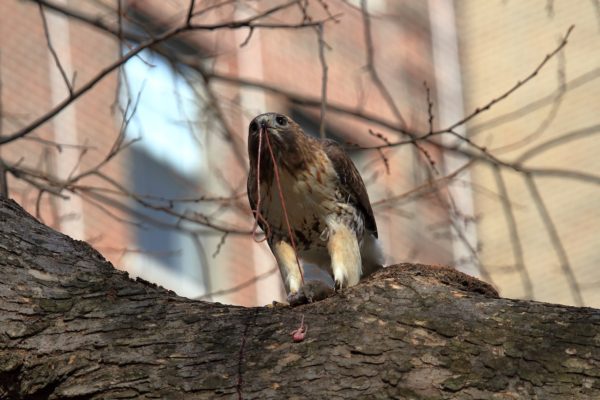
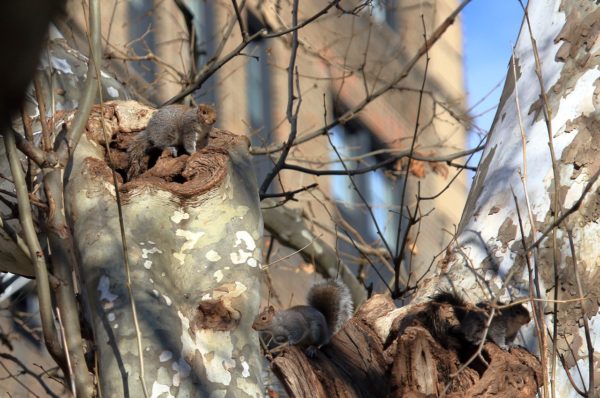
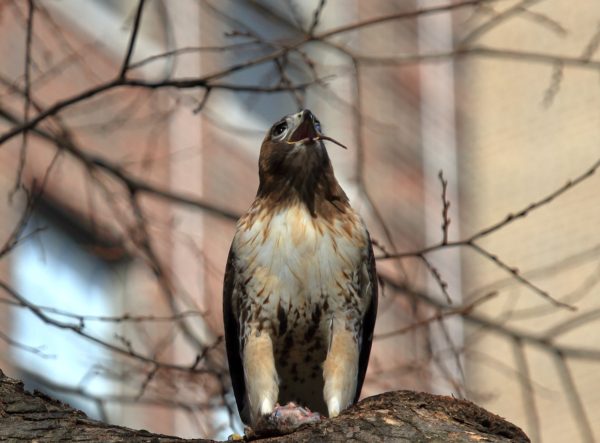
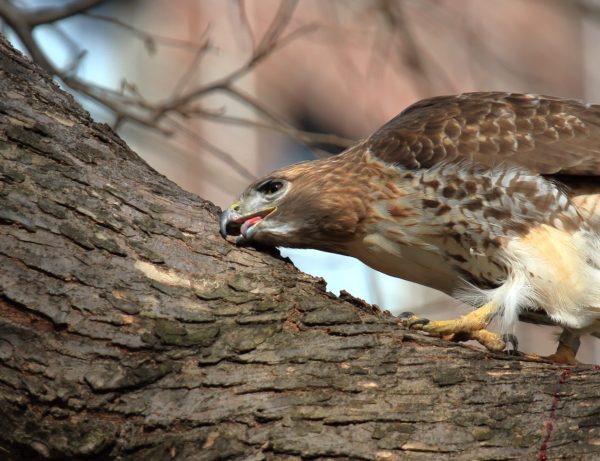

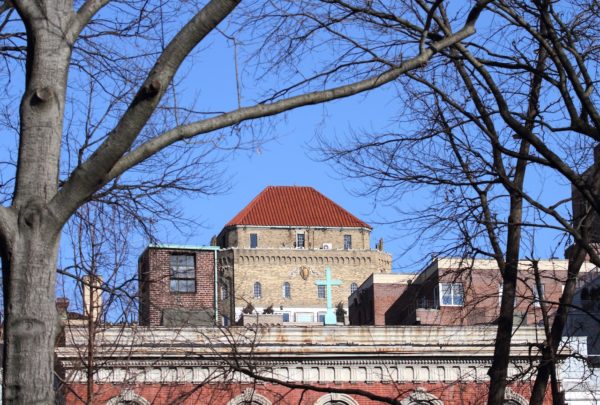
This has got to be one of your best all time sequences yet! What an amazing story! And it shows that even with super predators, e.g., our beloved RTHs, a hunt is often successful only about 1 in 4-5 attempts; not a very good percentage, yet enough to keep them alive. Had never seen the mantling over a squirrel hole before either! How intriguing is that! Surely, a good technique – known prey in known location – yet unsuccessful! Happy this banded male didn’t go empty-taloned after all that effort expended. Thanks, yet again – for letting us share – and do please dress more warmly!!
Thank you! It was a great outing. It was my first time seeing a Hawk mantle over a squirrel hole as well. These birds are always displaying new behaviors. Yes, it was my mistake to not wear my insulated winter boots today! 🙂
Agree with Susan: this post is definitely a 5-star post! And good for you for getting the band number and figuring out what kind of band it is. Also interesting that the resident WSP hawks overlooked this visitor.
Thank you! The resident Hawks will tolerate a visitor for a couple of days before they’ll drive them out. I don’t think I’ve ever seen a visitor last more than four days without getting hassled and eventually kicked out.
Does the difficulty in catching a squirrel meal , give rise to the question of this being an adolescent hawk vrs a more successful food seeking adult hawk?
How grand the hawk appears in your ~ 16/th frame.
My first thought or maybe a hope…”Bobby had been captured ,banded and returned to WSP…but, even to my untrained eye, this is a younger and smaller hawk…life goes on, does it not?
Thanks for your tramping in the cold to capture such fascinating pictures…I did not know squirrels built nests in the V neck of branches of a tree…always thought , they burrowed inside the tree trunk itself.
Fascinating!
I too thought it might be Bobby but I realized it was a stranger Hawk when I got closer to it. I agree; it seemed like a younger Hawk to me as well.
Happy New Year to all, but especially to Roger-Paw! What a wonderful series for the New Year…a tonic for these trying times.
Happy New Year to you, Rena!
Awesome, post as always. I had set it aside to read at a more convenient time – which is just now, 1/17 ~10:00 a.m.! I just read your post about finding the band number and determining where it was placed.
I’m sure I speak for us all, when I say how thankful we are to you and all your excellent pictures. You are out in all kinds of weather, for hours at a time. Thank you!
Here’s to the new year of hopefully, new hawklets – I know that’s not their name – eyass or something. Everything I know about hawks, I’ve pretty much learned here!
I hope NYU leaves the camera running again.
Thank you, Karen!
The cam is still live by the way. You can watch it anytime here: https://rogerpaw.com/live-nyu-hawk-nest-cam/
Thank you and congratulations on some amazng photographs.
Thank you! I’m glad you liked them.